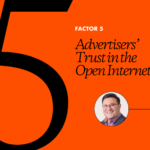The promise of behavioral advertising—i.e., ads targeted to users based on hyper-precise personal data—was irresistible. No longer were marketers beholden to the guesswork of print and TV advertising: here, finally, they could reach precisely the people most inclined towards their products, and—better yet—could actually measure the results. Cold, hard data would tell you who was buying what, and at what scale; what was working and what wasn’t.
Unfortunately, there was one major drawback—namely, that this process involved a historically unprecedented regime of consumer surveillance that wound up alienating the very people it was trying to reach. What began as vague discomfort on the part of the consumer (wait—is Instagram listening to me? How did it know I wanted those shoes?) has erupted into outright revolt, as one scandal after another has revealed just how invasive behavioral advertising can be. Now, US regulators, in lockstep with some of the Big Tech companies, are working to rein the industry in. If behavioral advertising isn’t on its last legs, it will not last in its current iteration for much longer.
With change on the horizon, marketers are increasingly turning their attention to the next thing. How can we continue to reach the right consumers if and when behavioral targeting becomes difficult, or outright impossible? Slowly but surely, a consensus is forming: in a post-behavioral world, first-party data is what’s important—the data you collect from your audience based on how they behave directly on your website or app.
With first-party data, behavioral targeting is supplanted by contextual targeting. Contextual targeting is a type of advertising that displays ads to a reader based on what they’re actively looking at. It catches them when they’re in a certain mindset—suggesting running shoes, say, when they’re reading an article about tips for running a marathon. It doesn’t follow users around the internet; there are no shady third-party data firms involved. It is, in a sense, old-fashioned—it’s how ads worked before the rise of Facebook, et. al.—although thanks to AI it’s much more powerful today than it was 20 years ago.
If behavioral targeting tools are like fossil fuels—effective, yet disreputable—contextual targeting via first-party data is like clean energy: it works just as well, if not better, while being markedly better for the world. As it turns out, you don’t need a complex, invasive user-profile to sell your product: contextual targeting has proved itself just as effective across a number of metrics (ad recall and awareness, purchase intent, etc.).
Of course, the best argument for contextual targeting is that, in the near future, marketers may have no other alternative. This past spring, Apple’s iOS 14.5 introduced a new feature: App Tracking Transparency. Now, if app-makers want to track their users, they need to explicitly ask permission—which many consumers are understandably hesitant to grant. This comes on the heels of Google’s decision to phase out cookies over the next few years, thus depriving behavioral marketers of their most essential tool. Meanwhile, legislators in Europe are strengthening digital privacy laws, and US politicians are becoming more and more skeptical of digital overreach, with Facebook’s recent woes being just the latest (if most dramatic) example.
Speaking of Facebook: a recent Harper’s cover story made the point that the Russian-disinformation narrative was actually, perversely, a boon to the company—it played into the idea that Facebook’s behavioral-targeting tools are all-powerful, that they can swing votes or (in the case of marketers) sell products with ease. But a rash of recent work—most notably Tim Hwang’s book ‘Subprime Attention Crisis’—have cast this narrative into doubt. It’s useful, here, to think about your own experience: how often are you getting ads for things you’ve already purchased? Or things you’d never want to buy? Pretty often, right?
These problems are less prevalent with contextual targeting via first-party data, as are many others—say, behavioral ads’ tendency to wind up alongside extremist or otherwise controversial content. Via AI, robust contextual targeting can scan the entire content of a page, not only flagging brand-unfriendly keywords but also analyzing that page’s semantic meaning, thereby drastically reducing the risk of a viral outrage cycle.
And if you’re still not persuaded, there is the not-insignificant matter of price: contextual targeting has demonstrated itself to be drastically cheaper than behavioral targeting. When you’re working off first-party data, you no longer need vast troves of third-party data to get your product in front of the right consumers; you also don’t need the personnel to properly analyze and deploy that third-party data.
By this point, a whole generation of marketers has come of professional age under the behavioral marketing paradigm. Making the switch can seem daunting, but take heart: Europeans made the switch years ago, after the EU’s General Data Protection Regulation was implemented, and there is no indication that their advertising ecosystem is falling apart.
Meanwhile, in the US, contextual advertising is projected to increase to a $335.1 billion industry (up from $157.4 billion in 2020). With the future of behavioral targeting unclear—and with user preference very clear—it is time to give contextual targeting a shot.


